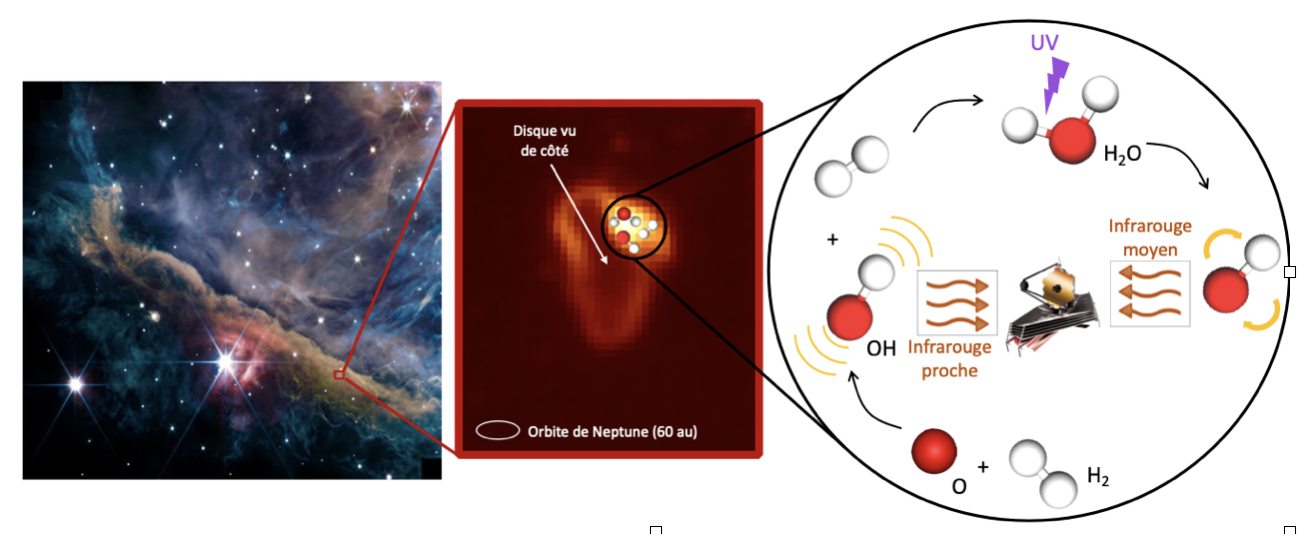The James Webb Telescope Witnesses the Destruction of an Earth Ocean Every Month
Follow us on Google News (click on ☆)
This discovery was made possible through an original multidisciplinary approach combining observations from the JWST space telescope and quantum physics calculations. This study, conducted as part of the Early Release Science (ERS) program PDRs4All and led by a young researcher, Marion Zannese, a PhD candidate at Université Paris-Saclay, has recently been published in the journal Nature Astronomy.
Water is essential to life as we know it. On Earth, the majority of our oceans' water would have been formed well before the birth of the Solar System, in the cold regions of interstellar space (-418°F). However, a portion of this water could have been destroyed and then formed anew at higher temperatures (212-932°F) when the Solar System was still a disk of gas and dust orbiting around our young sun.
To understand this mysterious cycle of water disappearing and then reappearing, astronomers turned the James Webb Telescope (JWST) towards “d203-506”, a protoplanetary disk in the Orion Nebula, a cradle of planetary systems. The intense ultraviolet radiation produced by massive stars leads to the destruction and reformation of water in d203-506, making it a true interstellar laboratory.
But how can the formation and destruction of molecules located more than a thousand light-years away from Earth be highlighted?
It was a collaboration with experts in quantum dynamics, taking part in the modeling side of the study, which allowed this challenge to be met.
When water (H2O) is destroyed by ultraviolet rays, a hydroxyl molecule (OH) is released with a dizzying rotational movement, followed by the emission of mid-infrared photons that travel to the JWST. In total, it is estimated that the equivalent of an Earth ocean is thus destroyed every month in the young d203-506 system.

To the left and center: the young disk d203-506 buried in the Orion Nebula as seen by the JWST (credits: PDRs4All).
To the right: Animation/Scheme illustrating how the formation and destruction of water were revealed by JWST observations (credit: M.Zannese).
But the story doesn't stop there. Through a similar mechanism of emitting near-infrared photons, JWST reveals to us that hydroxyl is abundantly produced from atomic oxygen through the reaction O+H2. This, in fact, is a key intermediate in the formation of water as it then reacts with H2 to form water through the reaction OH+H2. The cycle of destruction/formation is complete. A part of the water making up our oceans could have gone through such a cycle.
Reference:
The article titled "OH as a probe of the warm water cycle in planet-forming disks" appears in the journal Nature Astronomy, on February 23, 2024.
https://arxiv.org/abs/2312.14056